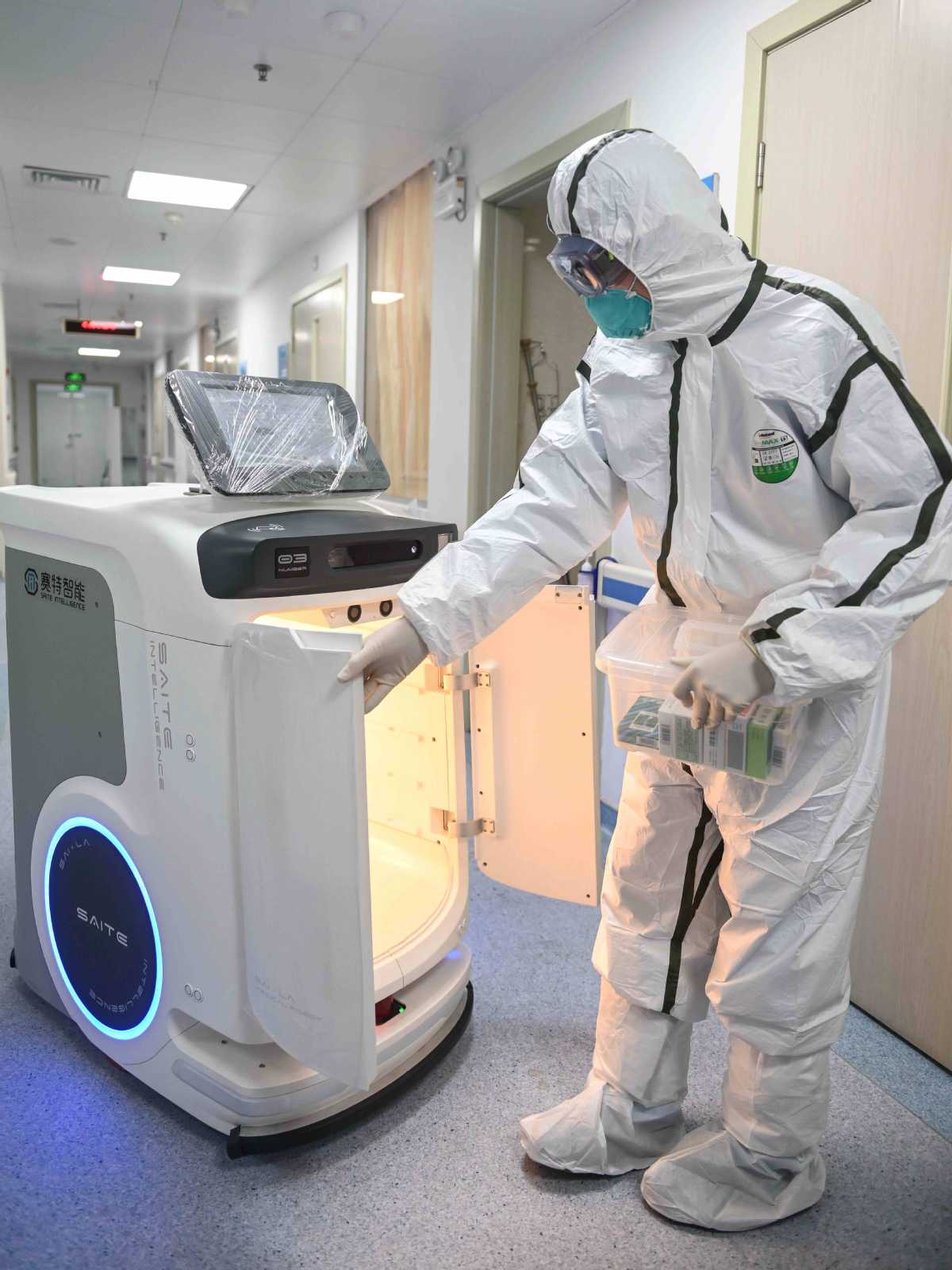Magnificent robots make medical magic
By Shi Jing in Shanghai and Li Wenfang in Guangzhou | China Daily | Updated: 2020-02-19 10:30

The newly introduced robots can save the medical workers the frequent need to put on and take off heavy protective outfits, including clothing, masks, goggles and boots, and help reduce the risk of infection. It takes an hour to put on and take off the whole set, said Luo.
Besides, the robots help save the outfit supply, which is rather stretched nationwide in the overwhelming work of treating the patients and screening suspected cases.
According to global market research firm Boston Consulting Group, the market value of the world's medical robot industry will reach $11.4 billion by the end of this year, making it the second-largest segment of the entire robotics industry.
According to Askci Consulting Co Ltd's estimates, the market value of China's medical robots reached $600 million in 2019 and the number will likely top $1 billion by 2021.
While robots have strengthened healthcare services during the contagion, virtual clinics and online medical services proved to be of great help as well.
Starting from Jan 29, a team of 10 leading experts from Guangdong province, led by Zhong Nanshan, a prominent Chinese expert in respiratory diseases, has been providing online consultations to remote cases, especially those in critical conditions. They read CT scan reports, discuss prescriptions and explain the use of medical devices.
Duan Yufei, director of the Health Commission of Guangdong Province, said such remote consultations led by Zhong are held at least once a day and have been normalized to help as many patients as possible. Meanwhile, about 60 hospitals in Guangdong alone have now launched remote consultations.
Similarly, the virtual assistant developed by Shanghai Udesk Co Ltd has been used in Putuo district of northwestern Shanghai to provide epidemic screening services. The virtual assistant can answer 200 phone calls in five minutes and provide results simultaneously.
It can gather target people's identification information, recent contacts and symptoms. With the information confirmed, the virtual assistant will classify the data and come up with statistical results instantly. Such job will usually take four hours for people to finish.
Xiao Hongliang, senior research manager of global research firm IDC in China, said that robots embedded with artificial intelligence as well as virtual doctors have been widely adopted in Chinese hospitals. Medical robots are sure to be better integrated into medical equipment to further improve medical standards, he said.
Although overwhelmed by instant fame, Pan of TMiRob tries to remain cool-headed, saying that medical robots are at the very early stage in China.
Medical robot providers should now focus on how to discover the true market demand and the various scenarios in hospitals. It will take about 10 years for the medical robot industry to reach a true inflection point, growing into an industry valued over 1 trillion yuan, he said.
"There are still many uncertainties, going forward. There will be numerous challenges for each company," said Pan.
Zheng Caixiong contributed to the story.
























